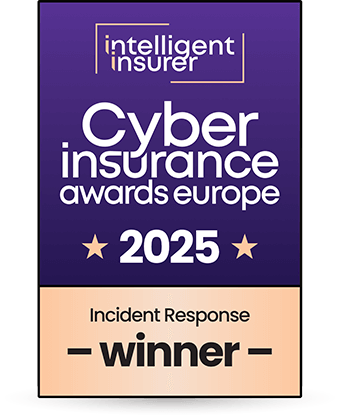Picture this: you arrive at your office to find encrypted files and a ransom demand on every screen. Ransomware attacks doubled from less than 0.5 percent of businesses in 2024 to 1 percent in 2025, translating to an estimated 19,000 organisations affected.
Traditional perimeter-based defences simply cannot contain today's sophisticated threats that bypass firewalls and exploit trusted connections. Zero trust security and ransomware prevention strategies represent a fundamental shift in thinking, assuming breach from the outset whilst limiting damage through continuous verification.
At Solace Cyber, we help organisations build resilient defences that protect against these evolving threats through comprehensive zero trust cyber security frameworks designed for modern business environments.

What is Zero Trust Security?
Zero trust architecture operates on a simple yet revolutionary principle: never trust, always verify. This security model abandons the traditional assumption that anything inside the network perimeter can be trusted, instead treating every user, device, and network request as potentially hostile until proven otherwise.
The approach centres on three core pillars that fundamentally reshape how we defend against ransomware.
- Least privilege access ensures users receive only the minimum permissions necessary for their roles, preventing attackers from exploiting over-privileged accounts.
- Microsegmentation divides the network into isolated zones, containing potential breaches and limiting lateral movement.
- Continuous verification means that authentication decisions happen repeatedly throughout a user's session, not just at login.
This represents a significant departure from traditional network security models that relied heavily on perimeter defences. Where legacy systems created a hard outer shell with a soft interior, zero trust architecture maintains consistent security policies regardless of location, device, or network connection.
The result is a more adaptive, intelligent defence system that can respond to threats in real-time whilst maintaining operational efficiency.
How Zero Trust Helps Prevent Ransomware Attacks
Zero trust security and ransomware prevention work hand in hand to create multiple layers of defence against sophisticated attacks.
- Stops Lateral Movement: Once attackers breach traditional networks, they often move freely between systems to locate valuable data. Zero trust architecture prevents this by requiring authentication and authorisation for every network segment, making it significantly harder for attackers to pivot and spread ransomware throughout your infrastructure.
- Limits Access to Critical Systems: The least privilege principle ensures that users and applications receive only the access they absolutely need. This dramatically reduces the number of potential entry points that ransomware can exploit, particularly targeting administrative accounts that often provide pathways to business-critical systems.
- Improves Visibility: Continuous monitoring provides comprehensive visibility into all network activity, enabling security teams to detect suspicious behaviour patterns that indicate early-stage ransomware attacks. This early detection capability is crucial for preventing encryption of valuable data.
- Protects Against Credential Abuse: Strong identity verification, multi-factor authentication, and privileged access management make it exponentially more difficult for attackers to abuse stolen credentials, a common ransomware attack vector.
- Reduces Attack Surface: Network segmentation means that even successful breaches remain contained within limited network segments, preventing organisation-wide ransomware deployment that characterises the most damaging attacks.
- Strengthens Remote Work Security: Zero trust extends protection to endpoints outside the traditional office perimeter, ensuring that hybrid workers remain secure whilst maintaining productivity and flexibility.

Key Components of a Zero Trust Ransomware Defence Strategy
Building an effective ransomware defence strategy requires the implementation of several interconnected security components that work together to create comprehensive protection.
Identity and Access Management (IAM)
IAM forms the foundation by establishing verified digital identities for every user and device accessing your systems. This centralised approach ensures consistent security policies across all access points.
Multi-Factor Authentication (MFA)
MFA adds crucial additional verification layers that make credential theft significantly less effective for ransomware operators who increasingly rely on stolen login information.
Endpoint Detection and Response (EDR)
EDR provides real-time monitoring and automated response capabilities for all devices connecting to your network, identifying and containing threats before they can execute ransomware payloads.
Network Segmentation
Network segmentation creates isolated zones that prevent ransomware from spreading between different parts of your infrastructure, containing attacks and protecting critical business systems.
Continuous Risk-Based Authentication
This approach adapts security requirements based on contextual factors like location, device, and behaviour patterns, automatically increasing protection when suspicious activity is detected.
Encryption and Data Access Policies
Encryption and data access policies ensure that even if ransomware succeeds in accessing systems, the data remains protected through robust encryption and granular access controls.
Monitoring and Analytics
Monitoring and analytics through SIEM and XDR platforms provide the intelligence necessary to detect, analyse, and respond to sophisticated ransomware campaigns that use advanced techniques to avoid detection.

Real-World Impact: Why Businesses Are Making the Shift
Organisations across the UK are increasingly adopting zero trust cyber security models driven by regulatory requirements and practical business needs.
The National Cyber Security Centre actively promotes zero trust principles, whilst frameworks like Cyber Essentials Plus and ISO27001 incorporate these approaches as best practice standards.
Insurance providers offer reduced ransomware premiums for organisations demonstrating robust zero trust security and ransomware prevention measures. A recent survey by Zscaler revealed that 60% of UK businesses anticipated experiencing a cyber breach in 2025, underscoring the urgent need for resilient security strategies.
Forward-thinking organisations recognise that zero trust represents a fundamental business enabler supporting secure digital transformation.
How Solace Cyber Can Help Implement Zero Trust
Transitioning to zero trust architecture requires careful planning and expert guidance. Our approach begins with comprehensive strategic assessment of current vulnerabilities, identifying security gaps that ransomware operators might exploit.
We develop bespoke zero trust implementation plans tailored to your business requirements, industry regulations, and risk profile. Our solutions integrate seamlessly with existing technology rather than requiring wholesale replacement.
Implementation extends beyond deployment through ongoing monitoring, support, and testing services. Our cyber risk assessment service provides the foundation for zero trust planning, delivering detailed analysis alongside practical recommendations to defend against ransomware. With 24/7 support from our UK-based operations centre, we provide expertise to maintain robust defences.

Take Control of Your Ransomware Defence Strategy Today
Zero trust security and ransomware prevention strategies provide proactive architecture to protect against evolving threats. Book a consultation with our specialists to explore how zero trust strengthens your ransomware defence strategy.
Our team will review your security architecture, identify vulnerabilities, and demonstrate how zero trust fits your broader cyber resilience needs. With 24/7 UK-based support and proactive threat detection, we deliver robust zero trust implementation. Contact us on 01202 308818 or complete our contact form for your consultation.


